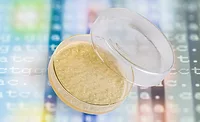Listeria: An Important Focus of Environmental Monitoring

It is no secret that food processors are battling Listeria. The number of reported incidents and recalls related to Listeria has been increasing, and processors are making efforts to rid their facilities of harborage organisms. And, of course, South Africa is recovering from what is understood to be the world’s largest and most deadly listeriosis outbreak in history.
In the U.S., these concerns for food safety, as well as new regulations and guidelines, particularly the U.S. Food and Drug Administration (FDA) draft guidance published in mid-2017, have processors reevaluating their testing programs—especially their environmental monitoring (EM) programs. The onset of Food Safety Modernization Act (FSMA) compliance dates and the accompanying inspections along with the prospect of FDA “swab-a-thons” has only accelerated this trend.
It was clear to us that testing for Listeria was growing faster than perhaps any other microbiological testing category, and we wanted to find out more.
In February, we surveyed 262 food processors across all processing categories, including 200 in the U.S. and Canada and 62 international processors. We asked about overall test volumes and how they have changed or may be changing in the next few years. We also asked questions about specific changes to their Listeria testing programs.
Changing Patterns in Testing
When asked if they would be changing the volume of EM testing for Listeria, about 35 percent indicated that they would be increasing the number of samples that they collect, roughly 15 percent indicated that they would be decreasing their sampling, and the remaining one-half indicated that they would be making no change (Figure 1). Interestingly, of those reducing their sampling, the average reduction was about 18 percent, but for those increasing their sampling, the average increase was 107 percent. .png)
These numbers, however, do not tell the entire story, and the data are skewed by some very large producers who are planning very large changes in their test volumes.
For instance, of those companies that indicated that they would be reducing their testing volumes, the five companies with the largest change represented approximately 70 percent of the change and a volume of just under 30,000 samples annually. Of those indicating that they would increase their sampling, the five companies with the largest change represented about 90 percent of the change in the sample and about 330,000 samples annually—an increase in sample volume more than 10 times that of the reduction.
The trend is that the larger companies that have already been doing a higher volume of samples are refining their programs but making only modest reductions in the test volumes. Those large companies that have been doing fewer samples will be dramatically increasing their test volumes from perhaps tens to up to hundreds of samples per week. Many of these companies include a few large companies with multiple locations.
We spoke to several of these processors to get more information. One processor that indicated that they were planning to reduce their EM sample volumes told us that they were changing their program to take a more focused approach. They had been taking several hundred samples each week throughout the plant, but this changed about 2 years ago. At that time, they adjusted their EM program to collect fewer samples for pathogen analysis in key problem areas, or, as they indicated, they adjusted from a “shotgun” to a “rifle” approach. The sample sites were developed using data collected over previous years; this approach allowed them to identify key problem areas and reduce the sampling they conducted in those areas, which were shown to be under better control.
Intensifying Efforts against Listeria
In other interviews, processors told us about their plans to dramatically increase their Listeria sampling, particularly their EM sample volume. One company reported that they are dramatically changing their program, with an aim to find and eliminate Listeria harborage sites and as a response to the FDA guidance released in 2017. Their plan will include increasing their overall EM sampling volume approximately twofold. They reported that all EM testing will increase, including tests for other pathogens, but the primary driver of the increase will be Listeria, mentioning that “we had been doing hundreds of Listeria samples per month and will now be doing hundreds of samples per week.” They also mentioned that end-product testing will increase somewhat, but less than 10 percent, and routine microbiology will be unchanged.
Another company we spoke with reported a similar plan: Later this year, they will be increasing their EM test volume significantly, but the numbers of samples for Listeria that they collect at each plant will increase from tens to hundreds of samples each week.
Another company planned to take a somewhat different approach. A few years ago, in anticipation of regulatory and inspection changes, they increased their EM sampling and doubled the number of samples that they were collecting for both Salmonella and Listeria. Although they were regularly collecting EM samples, most of the increase in their sample numbers came from “seek and destroy” sampling programs that they conducted three times per year. They found this to be an effective way to hunt for difficult areas that may have been missed by routine sampling. Following their FSMA compliance date, they received an FDA inspection that included a “swab-a-thon.” They were happy to report that the FDA sampling found no positive samples, but they nonetheless increased their sampling projects to quarterly, further increasing their overall volumes another 10–15 percent.
Many will be wondering where these samples will be analyzed. As we have seen in the past, where companies send their samples for analysis largely depends on their sample volumes. As shown in Figure 2, smaller and midsize users overwhelmingly send their samples out to a commercial lab, but above the 100-samples-per-week threshold, the balance tends to favor using a centralized corporate lab or an in-plant lab. This figure shows the selection based on the number of facilities, but when the data are weighted for volume, the number of samples being sent to commercial labs is roughly 50–55 percent of the total sample volume in the survey. This is expected, as the few, very large facilities with high sample volumes tend to have access to a central lab or in-plant lab, whereas the higher-number-but-smaller-volume users are much more likely to send their samples to an outside lab. This is consistent with the data we reported in December-January 2017, in which approximately two-thirds of processor locations will primarily outsource sample analysis, but this results in a 50/50 split in terms of overall pathogen sample volume.

An Opportunity for Testing Labs
Based on the data from this survey, as well as data that we have collected for other projects, we anticipate that sample analysis for Listeria will be the fastest growing category in food safety microbiology for the next few years. As the largest companies set the standard, others will follow, and we would expect this trend to continue for the next 2 to 3 years until companies have completed the adjustments of their programs and growth levels off at this increased level.
This increase in demand for Listeria tests will drive competition in the diagnostic and laboratory market, and we can expect to see new products and offerings emerge to capture this new demand.
Processors are clearly attacking the Listeria issue. It is now up to the diagnostic companies and laboratories to help them meet the challenge.
Bob Ferguson is the managing director of Strategic Consulting Inc. and can be reached at
foodsafetyinsights@gmail.com or on Twitter at @SCI_Ferguson.
Looking for quick answers on food safety topics?
Try Ask FSM, our new smart AI search tool.
Ask FSM →








